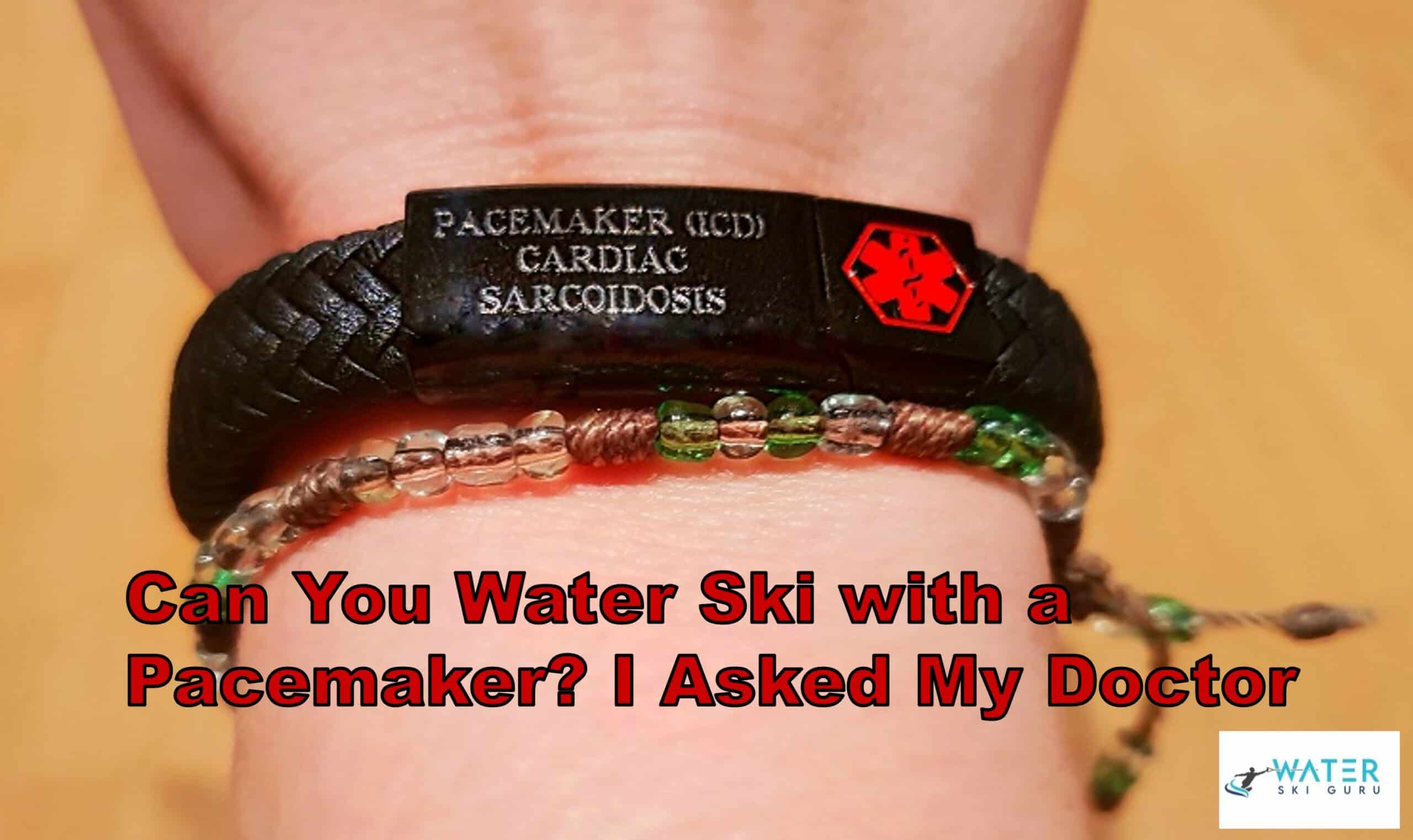Living with a pacemaker or ICD for the first time might be unsettling. That is why people become hesitant to engage in activities they used to do before having the device installed. There is no room for error because this is a significant health issue.
Water skiing is one of the activities that require physical effort.
So, can you water ski with a pacemaker? You can water ski with a pacemaker as long as you take extreme care not to take a blow to the area over the device. Based on your doctor’s advice, as long as you’re cleared for physically challenging activities, you can water ski. Typically, people who get a pacemaker need to avoid strenuous activity for about 2 to 3 weeks after the implant.
Keep reading to know more about safety measures regarding water skiing with a pacemaker.
Is Water Skiing with a Pacemaker OK?
Water Skiing is like any other sport that you can safely engage in 2 or 3 weeks after the implant. After the device is implanted, you should be able to participate in the same activities as everyone else your age. However, your activities are frequently restricted while the incision heals.
Avoid getting a hit to the area over the implant when participating in a physical, recreational, or sports activity. For example, a hit to the chest near the pacemaker or ICD might interfere with its operation. Consult your doctor if you get a blow to that region.
If you feel unwell after an exercise or have doubts about starting a new activity, always visit your doctor.
Why Is It Dangerous to Ski with a Pacemaker?
A pacemaker is implanted by creating an incision in the skin that forms a “pocket” in which the pacemaker is put. Restricting activity and keeping the insertion site clean and dry is essential for recovery. Anything that can harm that “pocket” can be dangerous.
Anyone in the healing phase (typically 2 to 3 weeks after the implant) should avoid intense activity. They should also take care not to get the area around the implant wet.
Anything that considerably elevates your heart rate or requires moving your body is considered a strenuous activity – this includes running, jogging, or participating in a fitness class.
Immersing the device or your incision underwater is also risky for the device’s functionality. It can damage the pacemaker or degrade its performance. During this initial period after having the procedure, you should also avoid swimming, utilizing a hot tub, or engaging in any activity that will get you underwater.
Waterskiing can involve falling down or getting hit by gear such as your ski or the rope handle. Falling down can cause a blow to the area above the device, which can be risky, and you don’t want to get this area damaged or hit. So, to be extra safe, wear a life jacket over your wetsuit even if you don’t need it to provide additional cushioning over your chest.
If you’re past the healing phase, then waterskiing doesn’t have to be excluded from your activities. However, you must consult your doctor before engaging in waterskiing or any other physically-challenging activities.
What Activities Can You Not Do with a Pacemaker?
Every year, an estimated 1.25 million pacemakers are installed globally. Unfortunately, recovery from this treatment frequently entails restricting your physical activity, not because your heart can’t withstand the exertion but because your body requires time to adequately heal around the pacemaker site.
So, what kinds of activities should you avoid with a pacemaker? The answer to that is different depending on the individual’s case. So, it’s better to ask your doctor whether or not you should avoid specific activities.
Generally, after getting a pacemaker implanted, you should avoid these activities -for a while:
1. Lifting weights
You will likely be advised to avoid lifting heavy items for about six weeks after the procedure. Using arm-strengthening equipment, rowing, lifting weights, and other similar exercises causes the lead to repeatedly bend and relax at the same point. This might degrade the lead over time.
This also includes lifting heavy grocery bags right after your operation. If you run errands outside your home, you may need assistance. When the healing stage is over, you can go back to running errands by yourself as usual.
2. Heavy exercising
Anything that can get your heart worked up should be avoided for the first three weeks at least. Jogging, hiking, running, or having a CrossFit exercise class are all examples of things you should take a break from for a while.
3. Using a hot tub
You should also avoid bathing, utilizing a hot tub, or engaging in any activity that will immerse the device or your wound underwater, such as swimming as well. Of course, it’s fine to return to it once you’ve fully recovered.
4. Excessive body movement
This is not applicable in most cases. However, you should avoid excessive body movements after your implant. Leaning on your arms or extending your arms aloft or behind you are examples of these gestures.
5. Irritating your skin
Some stuff can easily irritate the skin of the wound right after the implant. Therefore, wear loose clothing over the incision site. It is also recommended that you not massage your chest area around or near the incision not to irritate your skin.
You can pretty much get back to your normal life just after the wound is healed. You’ll get used to carrying a little extra weight that jiggles around when you’re doing rough sports. However, it’s advisable to always consult your cardiologist before participating in any activity that may put you at risk.
Related Questions
Can You Swim with a Pacemaker?
You can swim safely with a pacemaker. It’s advisable to consult your doctor before going for a swim anyways to be extra sure. However, if you’re past the healing phase, which varies from one person to another, it should be okay for you to swim with a pacemaker.
Can You Kayak with a Pacemaker?
You can totally kayak with a pacemaker. There’s nothing dangerous with kayaking while having a pacemaker device or ICD on. As long as your doctor doesn’t advise you otherwise, light exercising while kayaking can be helpful in your condition and will benefit your muscles.

